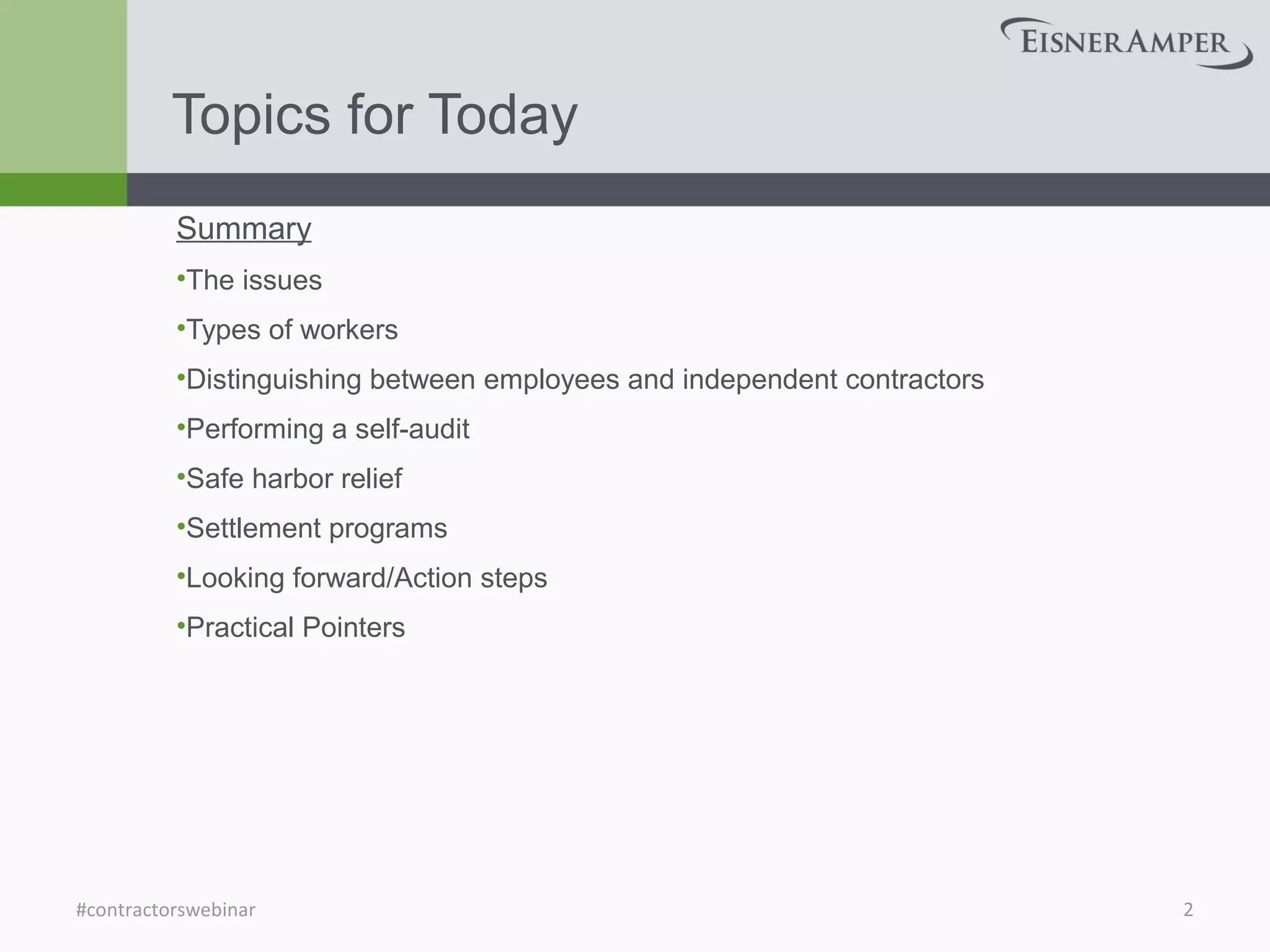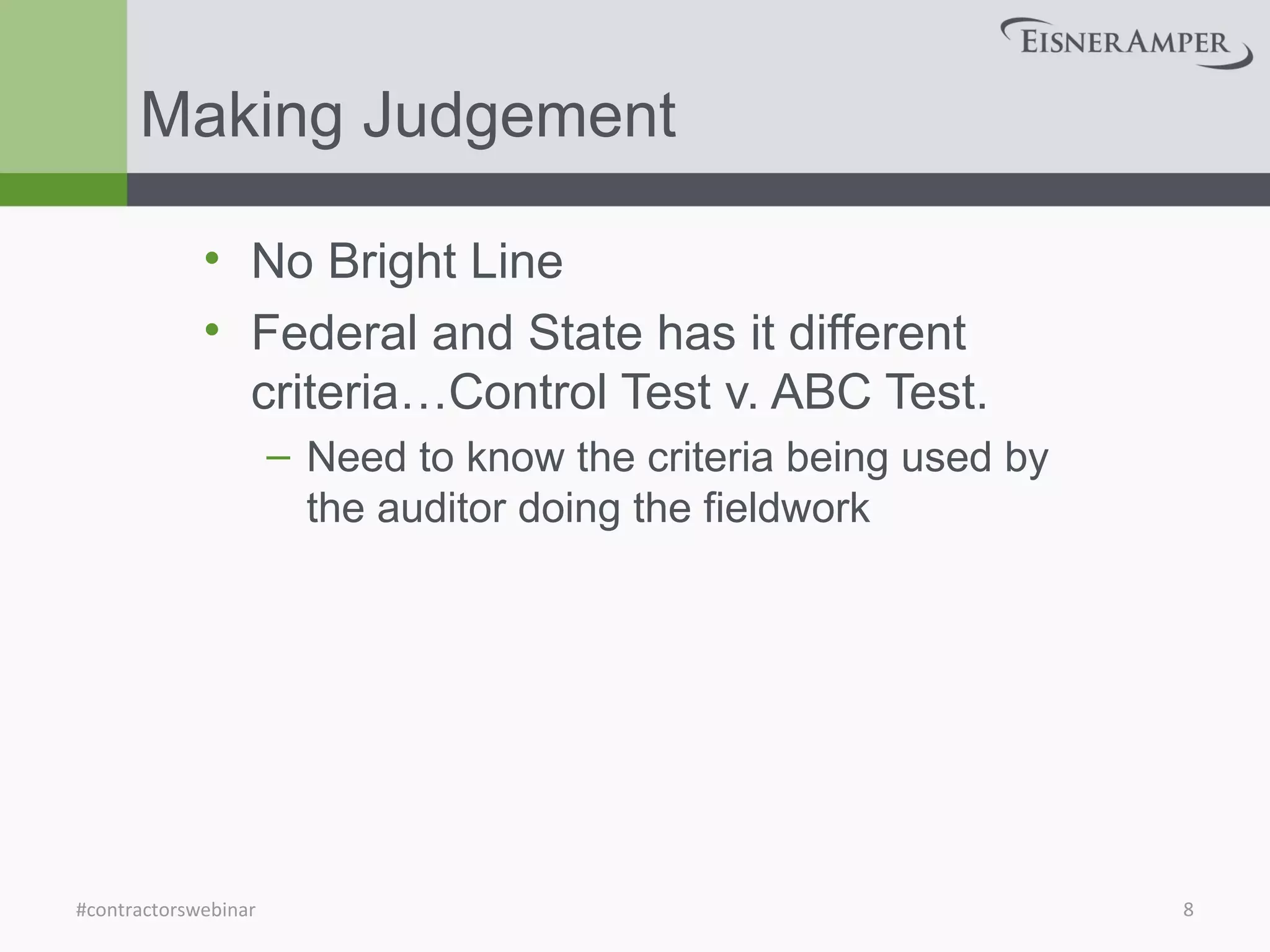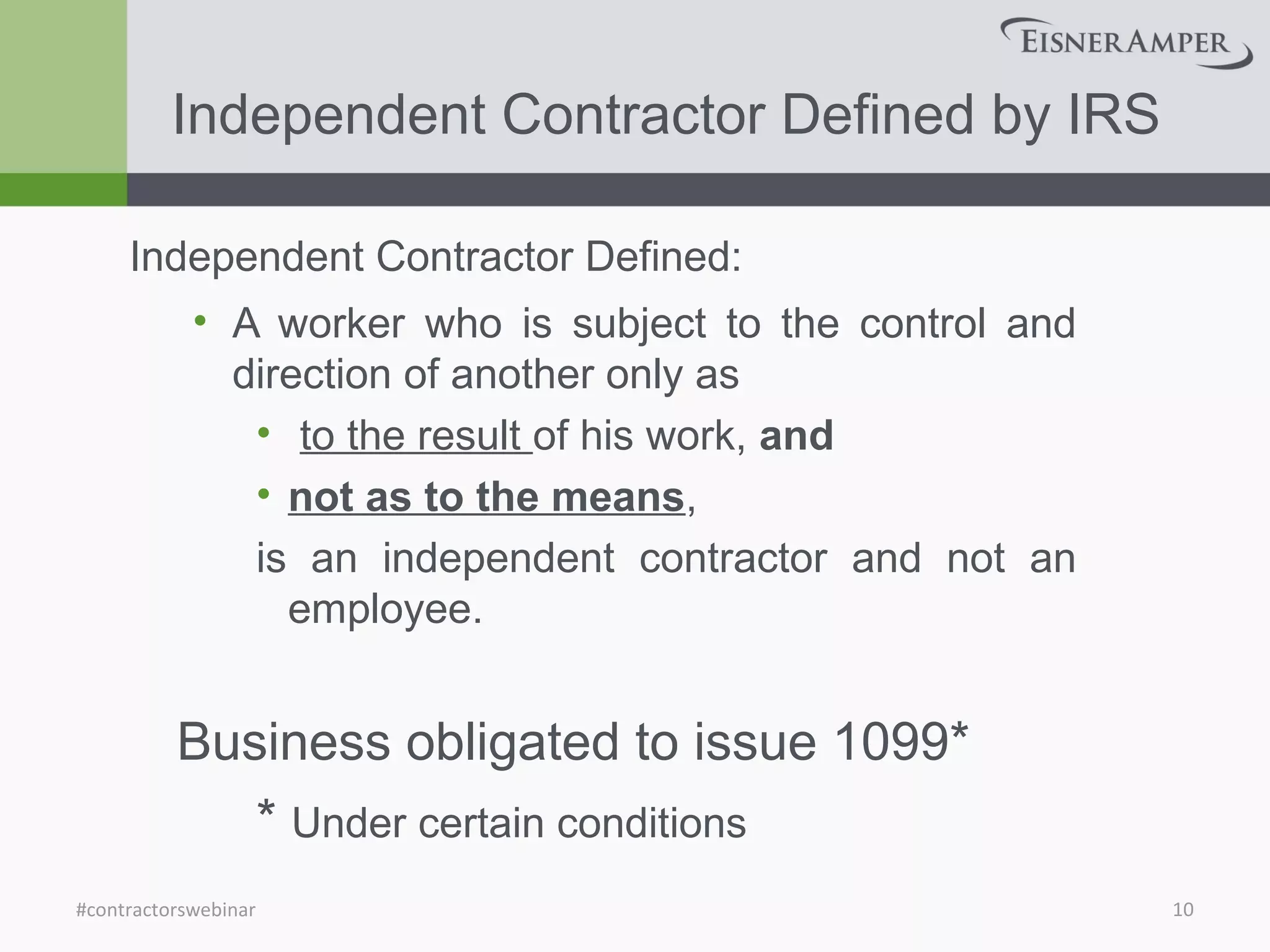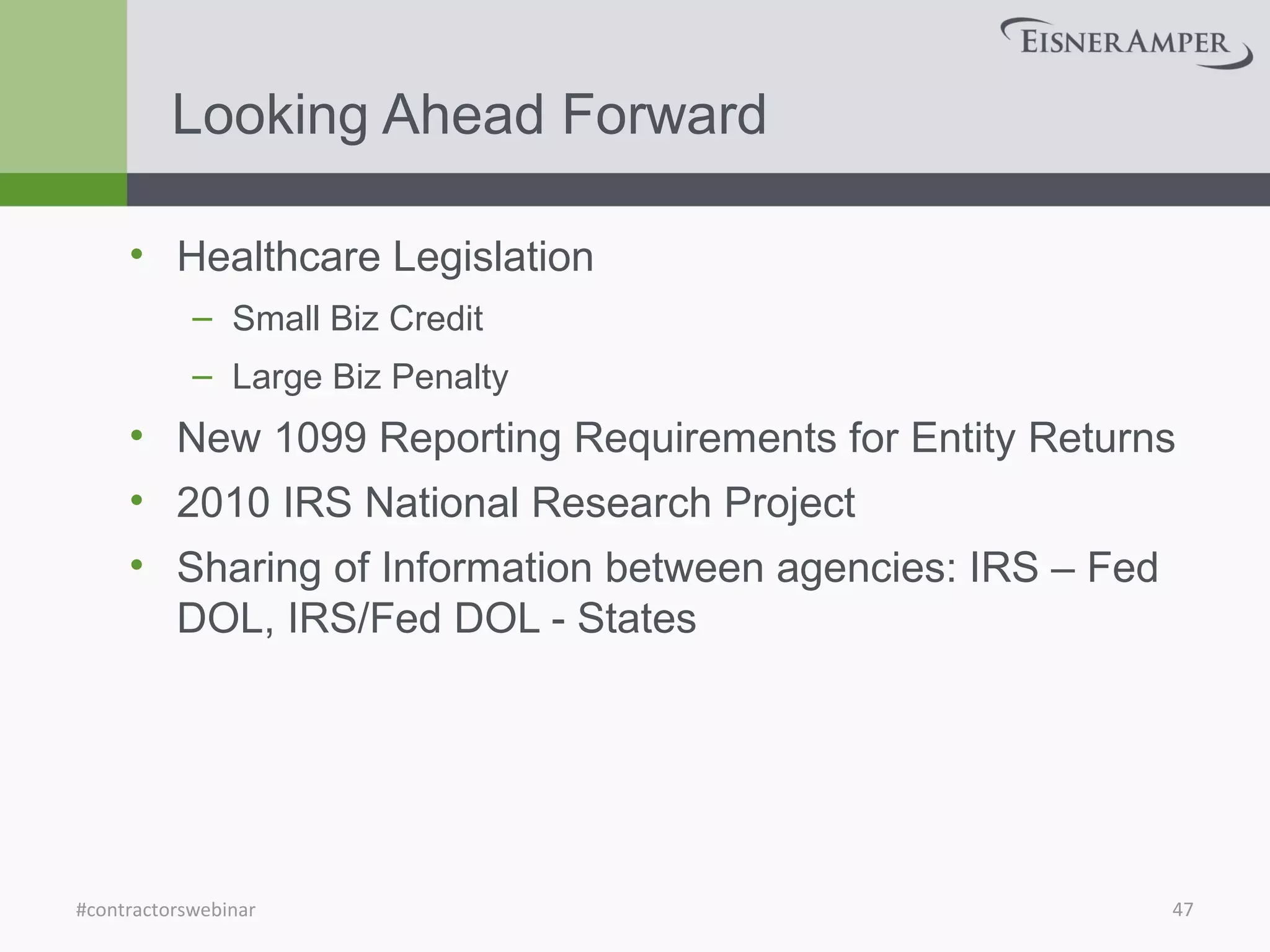This document discusses the differences between classifying workers as employees versus independent contractors. It outlines the issues with misclassifying workers, including loss of tax revenue and lack of protections for workers. The main factors examined by the IRS and Department of Labor for determining classification are described, including behavioral control, financial control, type of relationship, and economic realities. The consequences of incorrect classification can include tax penalties and risks in employee benefit plans and wage/hour laws. Proper classification is an area of increased enforcement.





































![Section 530 Requirements
• All Required Docs filed – 1096/1099s (Reporting)
– Requirement for filing 1099s for Businesses
• All unincorporated service providers…$600 or +
• New question on business returns [Required?/Filing?]
• Each group of workers treated consistently (Substantive)
– i.e. -
• Salespeople
• Delivery personnel
• “Reasonable” basis must be established
– See Next Slide
#contractorswebinar 38](https://image.slidesharecdn.com/7fabbbb7-a7a8-459c-ac0e-962e8911dfd3-160129121728/75/IndContractPPT-38-2048.jpg)













